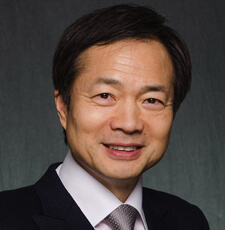Three-parent baby raises controversy over ethics in science
By Emma Gruner, Contributing Writer
In a perfect world, every new scientific discovery would be received with unequivocal excitement and praise. However, as modern scientific research becomes increasingly entangled with political and ethical questions, these advancements are not quite the heroic milestones they once were. Nowadays, groundbreaking experiments often generate more uneasiness than enthusiasm. Such was the case earlier this year with the birth of a baby boy to three genetic parents.
According to a story published by New Science on September 27, a Jordanian couple consented to a revolutionary in vitro fertilization procedure in order to prevent mitochondrial disease in their newborn. While the majority of DNA in a human cell is contained in the nucleus, a portion resides in the mitochondria, the organelle responsible for generating the cell’s energy. This mitochondrial DNA is inherited maternally, so a mutation in the mother’s DNA can lead to a variety of life-threatening conditions in her offspring. The couple in question had already lost two children to mitochondrial disease due to mutations.
Desperate, the couple contacted the New Hope Fertility Clinic in New York City. They were referred to fertility specialist Dr. John Zhang, who had experience performing unconventional IVF procedures. He decided to try a newly developed technique known as spindle nuclear transfer, but because of U.S. restrictions on human embryo manipulation, he had to perform the procedure in Mexico. Zhang ultimately created five embryos using this technique. For each embryo, he transferred the nucleus from the mother’s egg cell into a donor egg cell with its own nucleus removed.
The new egg now contained nuclear DNA from the mother and healthy mitochondrial DNA from the donor. These eggs were then fertilized with the father’s sperm, and the one viable embryo was implanted into the mother. The embryo survived to term, and the baby boy was born this past April. Further information on the story is currently limited, although more details are promised at the American Society for Reproductive Medicine meeting on October 19.
Surprisingly, this is not the first time such controversial fertilization techniques have been attempted. In 2003, Zhang himself tried a similar IVF technique in China, transferring an already-fertilized nucleus into a donor egg cell. While his patient became pregnant, the embryos did not survive to term. In the 1990s, before the U.S. began regulating mitochondrial replacement techniques, embryologist Jacques Cohen helped create several three-parent embryos by transferring donor mitochondria into the mothers’ egg cells.
Many of these embryos did, ultimately, survive; Cohen has continued to monitor these three-parent children, and reports that they have no obvious health problems. However, the most recent mitochondrial replacement procedure has generated considerably more controversy in the scientific community, primarily due to the clandestine and somewhat careless manner in which it was carried out.
The fact that the procedure was performed in Mexico is of great concern to many. While the U.S. National Academy of Sciences panel theoretically approves mitochondrial transplant, Congress has blocked the FDA from using federal funds to review such treatments. This forces specialists like Zhang to take their experiments abroad. Many scientists disapprove of Zhang’s maneuver, as they believe the environment of Mexico does not provide the proper oversight for such a procedure. Some, in particular, believe that Zhang should have made more of an effort to get the procedure approved in the U.S.; legal scholar Rosario Isasi, for example, says U.S. law often allows for controversial experiments if they are designed to prevent deadly disease.
Interestingly enough, though, the majority of criticism is directed not at Zhang but at the U.S. government, claiming that their restrictions are fruitless at best and harmful at worst. According Norbert Gleicher, a fertility specialist at the Center for Human Reproduction in New York City, the U.S. regulation situation, “kind of doesn’t make any sense because what it results in is exactly what you have been witnessing”: essentially, an experiment that moves “to places with no supervision”.
Another worrisome aspect of the procedure was its end result. While the baby was reported to be “doing well” at three months old, tissue analysis revealed that his cells still contained 1-2% of his birth mother’s faulty mitochondrial DNA.
Most scientists agree that no symptoms will occur as long as fewer than 20% of the DNA is faulty, yet others are still concerned. Before implementation, the embryo reportedly contained 5% of the mother’s faulty mitochondrial DNA. According to Dietrich Egli, a stem-cell scientist at the New York Stem Cell Foundation, this value is ten times higher than that seen in past embryos produced using spindle-transfer, and those were not even designed for implementation.
As such, Egli concludes that the experiment was “not carried out well”: not exactly a comforting assessment where a child’s life is at play. Also, analysis is unable to be performed on the baby’s heart and brain tissue. As these are the areas where weak mitochondria can be especially problematic, this adds yet another level of uncertainty to the future of this child’s health.
Overall, the birth of this “three-parent baby” has left a bittersweet taste in the mouths of the scientific community. As the reactions of these various experts show, it can be difficult to celebrate an achievement, even one that promises a solution for infertility and genetic disease, if one disagrees with the methods that were used.
As Dietrich Elgi puts it, “this kind of new technique needs a very serious approach and careful planning”, two attributes that many feel that Zhang’s procedure was lacking. Whether the rewards of the procedure will ultimately outweigh the risks remains to be seen, yet it is safe to assume that Zhang’s experiment will be remembered — for better or worse.

